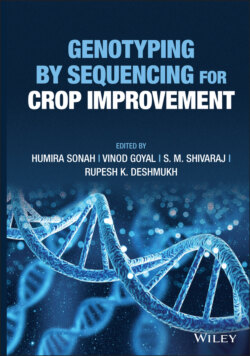Читать книгу Genotyping by Sequencing for Crop Improvement - Группа авторов - Страница 28
1.5.2 Whole‐Genome Resequencing (WGR)
ОглавлениеWGR with high coverage and depth overcomes the limitations of GBS due to missing data points and heterozygous calls. In general, WGR involves the sequencing of enough DNA fragments (>5×–20×) to cover the whole genome of an organism. Due to sequencing cost, the technique is suitable in crop plants having smaller genome sizes such as rice. In such cases, GBS can be replaced by resequencing of a larger size population at 5–6× depth. However, WGR for few samples can be done at a much higher read depth of 10–20× as in the case of the BSA‐seq approach (Nguyen et al. 2019). One of the important BSA‐seq‐based approaches is quantitative trait loci (QTL)‐seq developed by Takagi et al. (2015) in rice. Later this technique has been widely used in several crop plants. Takagi et al. (2015) developed a pipeline for analysis of the whole genome sequence of bulks and identification of causative variants. WGR has been used in several studies for identification of genome‐wide SNPs, genotyping mapping populations for construction of high‐density linkage maps and QTL mapping, linkage and genome‐wide association studies (GWASs), of reference genome improvement, and genomic selection (Poland and Rife 2012; Bhatia et al. 2013; Chung et al. 2017; Nguyen et al. 2019).
